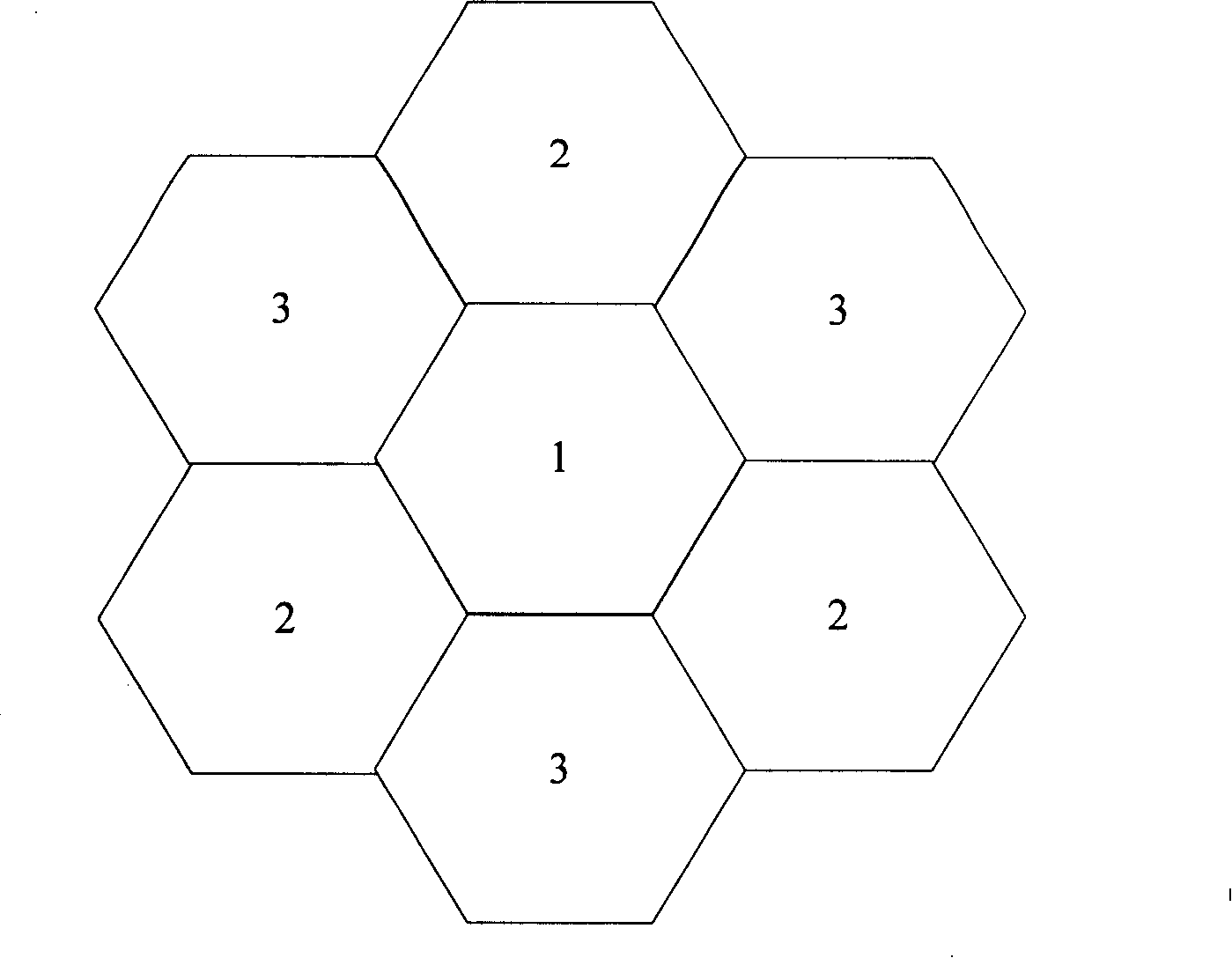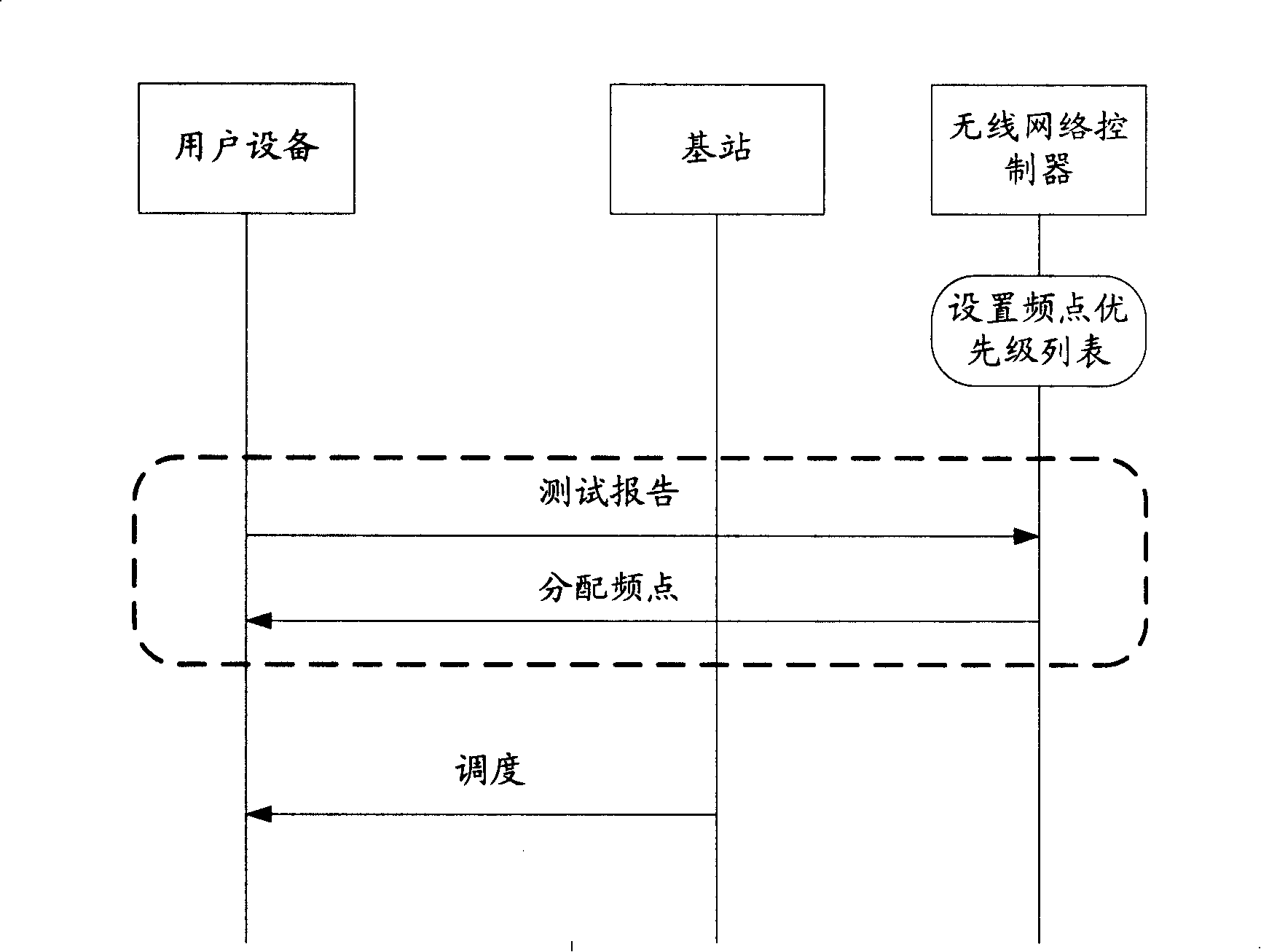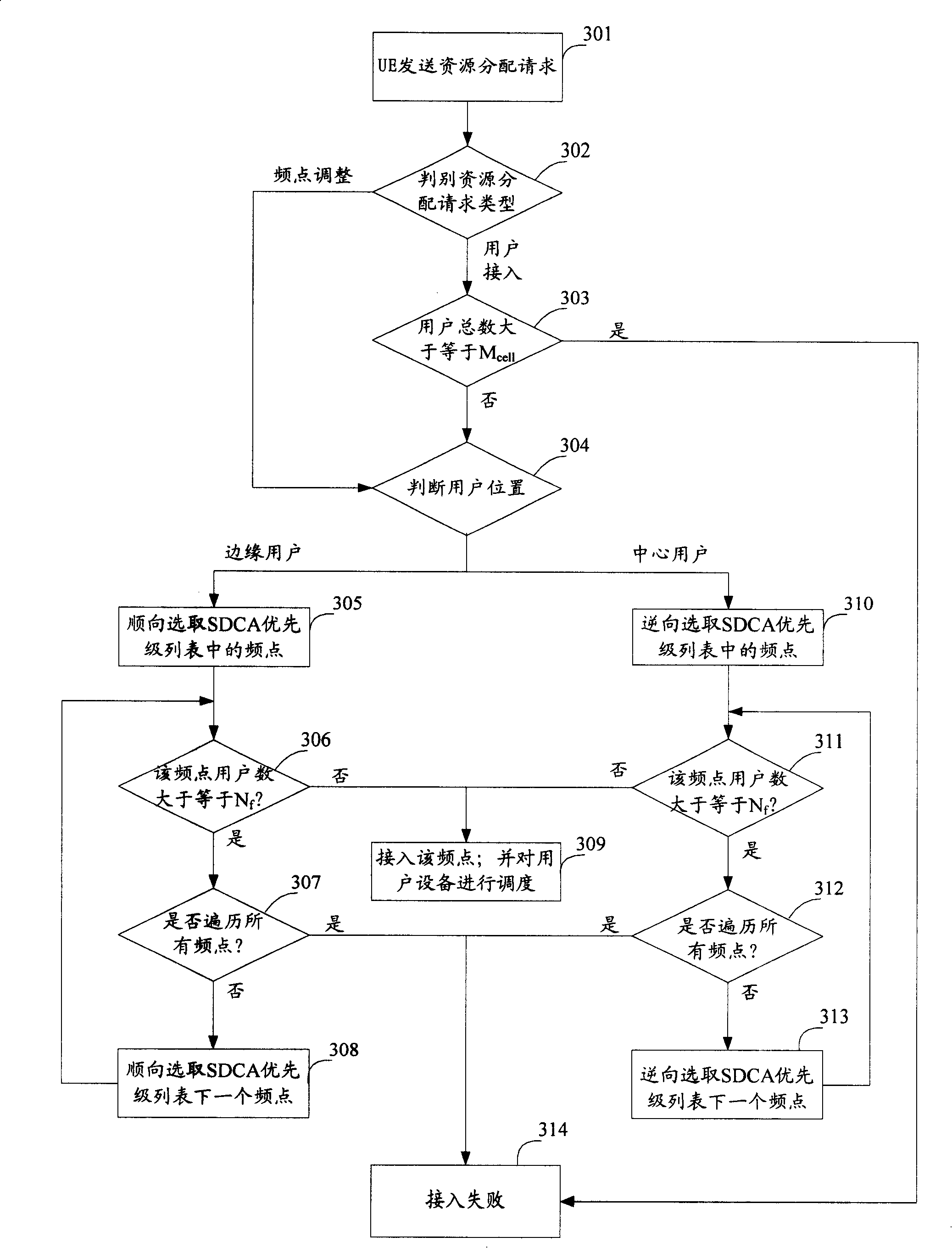Wireless resource managing method, wireless network controller and base station
A wireless resource management and wireless network technology, applied in the field of wireless resource management, can solve the problems of poor communication quality in cell throughput and difficulty in ensuring high-speed and correct data transmission, and achieve the effect of avoiding resource waste
- Summary
- Abstract
- Description
- Claims
- Application Information
AI Technical Summary
Problems solved by technology
Method used
Image
Examples
Embodiment 1
[0057] The necessary steps in this embodiment are: preferentially assign frequency points or time slots to edge user equipment; and schedule user equipment accessing frequency points or time slots.
[0058] In order to ensure that some frequency points or time slots are preferentially accessed to edge user equipment, a method of configuring the priority of each frequency point or time slot to access edge user equipment can be used. Then, the frequency points or time slots allocated to edge user equipment are prioritized. It refers to the frequency points or time slots with high priority.
[0059] Alternatively, by configuring a priority list of frequency points or time slots, after determining that the user equipment is at the edge or center of the cell, set the edge user equipment and the central user equipment to select the frequency points or time slots in the list in reverse order; then, The frequency point or time slot allocated preferentially to the edge user equipment r...
specific Embodiment 2
[0096] On the basis of Embodiment 1, this embodiment adds the consideration of the interference of adjacent cells, and in the setting of frequency points in the SDCA priority list, frequency points different from adjacent cells are preferentially accessed to edge users.
[0097] In order to effectively reduce the interference in the system and improve the throughput of the entire system, the RNC selects different frequency points for adjacent cells as much as possible to preferentially access edge users. In a multi-frequency point system, the main frequency points of adjacent cells are often different, so edge users are given priority to access the main frequency point of this cell. see Figure 4 , is a schematic diagram of multi-frequency point resource allocation referring to the interference of adjacent cells, in which cell 1 reserves the primary frequency f1 for user access at the edge (the area between the solid line and the dotted line), and f2 and f3 are the center (the...
specific Embodiment 3
[0100] For the multi-frequency point system, on the basis of the first or second embodiment, this embodiment adds the judgment of the UE type, and implements different resource allocation and scheduling strategies for different types of UEs.
[0101] According to the differences in UE capabilities, UEs can be divided into three types: Type A: Single-frequency UE developed in accordance with the 3GPP TD-SCDMA release 4 standard, which only supports sending and receiving information on the main frequency point; Type B: only supports one frequency point Send and receive information on the Internet, and support multiple frequency point systems at the same time; Type C: can support multiple frequency points to send and receive information at the same time.
[0102] When configuring resources for UEs of type A, it is mainly considered that the number of users connected to the main frequency point does not reach the upper limit N f1 (f1 is the main frequency point of the multi-freque...
PUM
 Login to View More
Login to View More Abstract
Description
Claims
Application Information
 Login to View More
Login to View More - R&D
- Intellectual Property
- Life Sciences
- Materials
- Tech Scout
- Unparalleled Data Quality
- Higher Quality Content
- 60% Fewer Hallucinations
Browse by: Latest US Patents, China's latest patents, Technical Efficacy Thesaurus, Application Domain, Technology Topic, Popular Technical Reports.
© 2025 PatSnap. All rights reserved.Legal|Privacy policy|Modern Slavery Act Transparency Statement|Sitemap|About US| Contact US: help@patsnap.com



